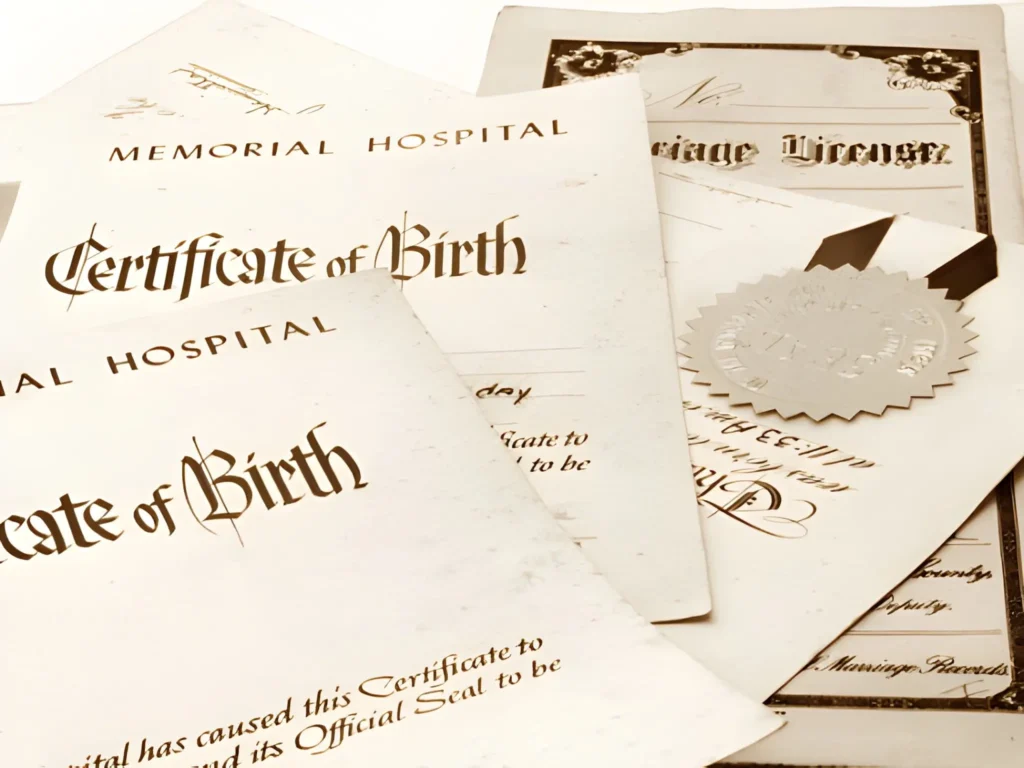When you’re submitting paperwork for immigration, citizenship applications, or international adoptions, the government doesn’t just want a translation of your birth certificate—they want a certified one. There’s a massive difference between having your bilingual friend translate your document and getting a certified birth certificate translation. The certification is essentially a sworn statement that the translator is qualified and that the translation is accurate and complete. Without this formal certification, most government agencies, courts, and educational institutions will reject your documents outright, no matter how accurate the actual translation is. This certification serves as a legal guarantee that creates accountability, and honestly, it’s the only thing standing between your application moving forward or getting stuck in bureaucratic limbo for months.
What Actually Makes a Translation “Certified”
The term “certified translation” gets thrown around a lot, but what does it actually mean? It’s not like there’s one global certification body that stamps documents. The requirements vary depending on where you’re submitting your paperwork, which is part of what makes this confusing.
In Australia, certified translations must be completed by a NAATI-certified translator. NAATI (National Accreditation Authority for Translators and Interpreters) is the national body responsible for ensuring that translators meet strict professional and ethical standards. Government departments, courts, and educational institutions across Australia will only accept translations completed and certified by NAATI-accredited professionals.
Outside Australia, different countries have their own certification systems. For example, in Spain and Italy, translations for official use must be completed by sworn translators who are formally appointed by the government. These translators hold legal authority to certify translations, and their signed and sealed translations carry the same weight as the original documents.
While the certification process varies between countries, the purpose remains the same: to ensure the translation is accurate, verifiable, and legally valid. For anyone submitting Australian documents overseas, working with a NAATI-certified translator experienced in sworn translations ensures your documents meet both local and international requirements.
Why Immigration Offices Reject Uncertified Translations
Immigration departments process thousands of applications daily, and they need a standardised way to verify document authenticity. When you submit an uncertified translation, they have no way to trace it back to a responsible party or verify the translator’s qualifications.
I’ve seen cases where people submitted perfectly accurate translations done by fluent speakers, but because there was no certification statement, the entire application got delayed by six months while they scrambled to get proper certified versions. The immigration officer doesn’t care that your translation is accurate—they care that they can’t accept it because it doesn’t meet procedural requirements.
There’s also a fraud prevention angle here. Birth certificates are prime targets for document fraud because they’re foundational identity documents. The certification process creates a paper trail. If someone submits a fake birth certificate with a fake translation, investigators can track down the supposed translator. This accountability discourages fraud and gives officials confidence in the documents they’re processing.
Some countries like Australia and New Zealand require translations to be done by NAATI-certified translators specifically. NAATI (National Accreditation Authority for Translators and Interpreters) is their official certification body, and they maintain a public register of certified translators. If your translation isn’t from a NAATI-certified translator, it’s automatically invalid regardless of quality.
The Legal Liability That Comes With Certification
When a translator certifies a document, they’re putting their professional reputation and potentially their legal standing on the line. This isn’t just a formality—there are real consequences for inaccurate certified translations.
If a certified translation contains errors that affect legal proceedings, immigration decisions, or property rights, the translator can be held professionally and legally liable. They might face complaints to their professional association, loss of certification, or in extreme cases involving fraud, criminal charges.
This liability is exactly why you want a certified translation. It means the translator has skin in the game. They’re not going to rush through your document or make careless errors because they know there are consequences. Compare that to asking a bilingual coworker to translate your birth certificate during their lunch break—they’re doing you a favor with zero accountability if something goes wrong.
Professional translators who offer certified translations typically carry errors and omissions insurance specifically for this kind of work. This insurance exists because the stakes are high enough that mistakes can result in lawsuits, especially in cases involving inheritance disputes, citizenship applications, or child custody battles.
When Apostilles Come Into Play
Sometimes, official documents that are being used overseas need to be apostilled before translation. An apostille is a certificate issued by the Department of Foreign Affairs and Trade (DFAT) that confirms the authenticity of a public document such as a birth certificate, marriage certificate, or court record.
It’s important to understand that the apostille verifies the original document, not the translation itself. Once the document has been apostilled, a NAATI-certified translator can produce an accurate translation that complies with the requirements of the receiving authority.
This process helps ensure your documents are fully recognised abroad and prevents delays caused by missing or invalid authentication.
How Certified Translations Protect You Legally
Beyond just getting your application accepted, certified translations protect you if questions arise later. Let’s say you immigrate to a new country and five years later there’s a question about your birth date or your parents’ names on some other legal matter.
If you used a certified translation originally, you have documentation showing that a professional translator verified that information from your original birth certificate. If you used an uncertified translation or no translation at all, proving what your original document said becomes much harder.
This matters in situations like:
- Inheritance claims where birth relationships need verification
- Pension applications that require proof of age
- Family reunification immigration cases
- Citizenship applications for your children based on your status
- Legal name changes or corrections
Having that certified translation on file creates a legally defensible record of what your original document stated. Without it, you might end up having to get your birth certificate retranslated years later, and if the original has been lost or destroyed, that can create serious problems.
The Cost Difference and Why It’s Worth It
Certified translations cost more than basic translations—usually anywhere from 50% to 200% more depending on the language pair and document complexity. This bothers people, especially when they’re already spending money on application fees, medical exams, and other immigration costs.
But think about what you’re actually paying for. An uncertified translation that gets rejected means you’ve wasted the application fee, delayed your case, and now you need to pay for a certified translation anyway. So you’re paying twice and losing time.
The certification fee covers the translator’s increased liability, their professional credentials and memberships, their insurance, and the additional administrative work of preparing the certification statement with all required elements. For a document as important as a birth certificate that affects your immigration status or legal rights, it’s money well spent.
Also Read-



